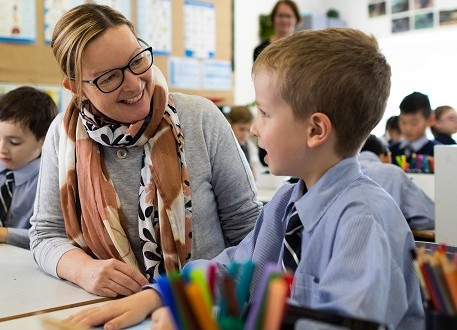Rosenshine principle guiding student practice

Let's delve into an engaging exploration of what is actually a vital aspect of educational science - the Rosenshine principle guiding student practice. This invigorating journey aims to shed light on the and it's principle of guiding student practice significance in shaping the learning process in the classroom.
An important guiding philosophy in enhancing student practice lies in its emphasis on rehearsal of new material. This practice resonates with the teacher having a high frequency mindset, in that you provide the forum and time to dedicate ample time for students to engage with and thoroughly grasp new subject matter.
Rosenshine principle guiding student practice - provide the necessary time
Emphasizing rephrasing, summarizing, and elaborating, learners are encouraged to articulate newly learned concepts in their words. This helps bridge the gap between passive learning and active understanding, aiding students' grasp of abstract or complex ideas more efficiently and effectively.
Providing more time for practice and allotting an extensive period for working with the new material reinforces other teaching principles. Providing more time for practice features prominently in this principle, ensuring students gain a profound understanding rather than a shallow familiarity with subject matter.
The principle of guided student practice redirects the conventional mindset, from rapid completion to thorough comprehension. The aim is not rote memorization; it’s about fostering a deep-seated understanding that remains embedded in students' long=term memory long after classroom hours.
A critical aspect of guiding student practice is to increase time checking for understanding. Teachers should illuminate the path for their students, identifying any obstacles in their comprehension, and provide necessary guidance to overcome any perceived challenges.

Guidance takes various forms, including constructive feedback, crucial hints, or suggestive questions. Each form serves to direct and guide learners toward the right direction - closer to understanding and solving the problem at hand.
Checking for understanding is more than just monitoring students' progress. It serves as a compass, ensuring that your students' cognitive journey stays aligned with the learning objectives outlined by you and/or the curriculum. Through regular checks, you can identify areas of struggle and provide personalized guidance.
One of the essential components in this principle is the concept of teacher led practice. As a term synonymous with providing more structure and direction, guided practice under a classroom teacher's leadership empowers students to get hands-on with new learning material.
In a teacher-led classroom atmosphere - where the educator lights the path for students' acquisition of knowledge - students are not passive observers. Instead, the teacher facilitates an environment where learners actively engage with the subject matter, facilitating and directing their students' unique understanding and perspectives.
Rosenshine principle guiding student practice - enhance problem solving
The principle of guiding student practice isn't strictly bound by the physical boundaries of a classroom either. It identifies the significance of providing ample opportunities for students to practice beyond the classroom, in real-world scenarios.
This principle emphasizes the importance of honing the skills of problem-solving. By guiding their practice and focusing on the process rather than the outcome, students learn not just the solution but also the journey that leads to it.
Guidance often also demands adjusting the difficulty level, starting with more straightforward problems and gradually increasing complexity as students gain confidence and mastery. This strategic structuring reinforces other teaching principles by nurturing a deep-rooted understanding and promoting retention.
The Rosenshine principle that guide student practice envision not just knowledgeable students but confident problem solvers. The aim is to transform classroom environments into incubators of understanding, nurturing independent thinkers ready to face real-world challenges.
In guided practice, mistakes are recognized as stepping stones towards learning. Every error is a learning opportunity, a chance for the teacher to step in, illustrate the problem, guide the student through the solution, and fortify their understanding.

Extended practice under the teacher’s guidance eventually shapes students to become more autonomous learners. The repeated cycle of instruction, guided practice, and independent application reinforces learning and helps in solidifying new concepts.
Teacher-led and thoroughly guided practice syncs perfectly with the tenets of the Rosenshine principles. Their high frequency and dedicated time reinforce other teaching principles, promoting a harmonic resonance in the educational experience.
Understandably, guiding student practice requires patience and persistence. However, the rewards reaped from this dedicated time and effort are invaluable - guided practice reults in independent thinkers with a deep understanding of concepts and an inherent and developed problem-solving ability.
A successful application of Rosenshine's principles elevates teaching beyond mere instruction. It converts every classroom exchange into a vibrant discourse of knowledge, making the learning process an engaging journey rather than a monotonous one-way street.
“Guiding student practice” also nourishes a thriving classroom environment. An inviting, enthusiastic, and optimistic ambience that celebrates learning, accommodates mistakes, and inspires intellectual exploration.
While the journey of implementing Rosenshine's principle of guiding student practice can be challenging, the transformations in your students’ learning experiences will be rewarding. The principles may seem simple, but their impact on student learning can be profound.
Remember, the Rosenshine principle that guides student practice constitutes more than merely a teaching strategy. It's an educational ethos, a commitment to foster a nurturing environment where students are motivated to engage, explore, and excel.

Ultimately, the aim of the principle of guiding student practice extends beyond academic development; it lies in furnishing students with life skills. Those who master these practices stride confidently into the world, not just as competent individuals but as lifelong learners.
With the Rosenshine principles lighting the path, the voyage of teaching and learning for you an your students turns into an enlightening adventure. It crafts a classroom culture of curious learners, turning education from a conventional mandate into a lively exploration of knowledge. Welcome aboard this rewarding journey!
REFERENCES:
Rosenshine, B (2012) Principles of Instruction: Research Based Strategies that all Teachers Should Know American Educator, Spring 2012
